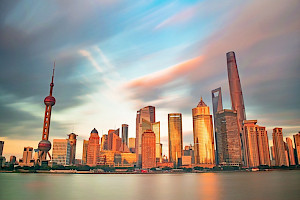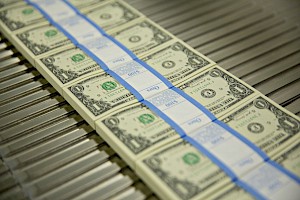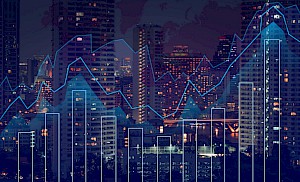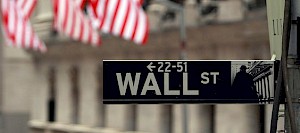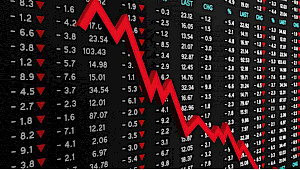The central banks have set the stage for a persistent and ugly inflationary future
September 08, 2021Originally published in The Toronto Star on August 31, 2021 as contributing columnist
Nobody knows nothing.” — William Goldman
It’s likely the most important and hotly debated subject in today’s financial markets: Are we entering an inflationary or deflationary era?
Which scenario you subscribe to will make an enormous difference in how you invest your money. Simply put, if you believe in high inflation, you would put your money in hard assets, like gold, real estate, commodities and certain stocks. And of course, the currency of the country where the inflation is taking place should be avoided.
On the other hand, if you believe we are entering a deflationary environment, you would stay in cash and bonds.
Regardless of which side of the debate you land on, the wrong decision could totally devastate your portfolio.
Day after day, the financial news features a parade of smug people pontificating on this issue. And they will inevitably be evenly split in their respective opinions. For the average investor, it’s a cornucopia of confusion.
I have been a keen student of economic history and I’ve been writing about markets for the past two decades. After the 2008 financial crisis I made a prediction that ended up being only partially right. While many market observers were forecasting an economic depression, I took the position that the U.S. Federal Reserve would step in and bail out the system by printing money (quantitative easing). And in doing so, creating a floor under the economy to prevent a full-blown depression. I was proven right on both counts.
However, I also predicted that we would see 1970s-style inflation, or worse. That’s where I was wrong. Instead of making its way into consumer prices, all that newly printed money was funnelled into various asset classes instead. The biggest beneficiary of all this largesse was the stock market.
Today asset inflation is still alive and well, thanks to a Fed monetary policy that provides artificially low rates and an ongoing $120 billion of new money created every month.
So, where did I get it wrong? For the longest time I believed that it came down to two factors.
First, globally there was still a lot of excess capacity to produce goods, which would keep a lid on producer costs.
Second, and more importantly, the zero-rate interest environment allowed institutions and the wealthy to tap into as much cash as they wanted and pay virtually nothing for the privilege.
In essence, it was free money to those that didn’t need it.
Most of that borrowed money went into investments in real estate, along with the financial markets. That’s the reason we are seeing bubbles in almost every asset class and why global debt has more than doubled since 2008, to a staggering $270 trillion.
The most egregious outcome that stemmed from these policies was the ever-widening wealth gap — this level of inequality was last seen in the 19th century.
Since the COVID pandemic hit in 2020, government deficits — especially in the U.S. — and the money printing needed to maintain the low costs of all the additional debt required have gone through the roof. In fact, they’re at a much higher rate than in the aftermath of the 2008 financial crisis.
The Fed balance sheet — the totality of its assets and liabilities — has doubled to $8 trillion U.S. (up tenfold since 2008) and the total U.S. federal debt is approaching $30 trillion (up threefold). But unlike in 2008, the money printing, deemed necessary due to the pandemic, is generating inflation on almost every product or service you can imagine. Everything is going up in price. In June and July, the U.S. consumer price index (CPI) was up 5.4 per cent annualized for each month. That’s a huge increase from the sub-two-per-cent inflation rates we have grown accustomed to over the past decade.
It’s what happens from here, though, that is generating the ongoing inflation-versus-deflation disagreement.
The Fed will tell you these inflation numbers are “transitory,” caused by temporary bottlenecks in supply chains and the effects of the reopening of the economy. Many well-known market pundits strongly disagree: They believe inflation is not only here to stay, but that it could get much worse, especially as “inflation expectations” set in. However, why would the outcome be any different than it was after the last round of excessive money printing?
I had a recent conversation with my friend James Rickards, an American lawyer, economist, investment banker, speaker, media commentator and author on matters of finance. He recently wrote the book, “The New Great Depression: Winners and Losers in a Post-Pandemic World.”
Rickards believes we have been in a deflationary environment for the past 20 years, with the Fed caught in a desperate (and losing) race to increase money supply in the face of rapidly decreasing money velocity.
The term velocity refers here to the rate of turnover in money supply — the number of times one dollar is used to purchase final goods and services. The higher the velocity, the more upward pressure on inflation. Think of it in this way: If a central bank creates a pile of new money and no one spends it, how can prices go up?
The $7 trillion of new money multiplied by zero use still equals zero. According to Rickards, that’s what’s been occurring over the past 20 years and especially since the start of the pandemic. Money velocity in the U.S. peaked in 1998 and has been falling ever since. Today it’s half of what it was in 1998. Fed policy has been on a dismal 20-year run of failure.
The reasons behind this trend, the theory goes, are deflationary forces at play: Changing demographics, technology and automation, high debt loads and most importantly, “precautionary savings” all play a role in keeping prices down.
Precautionary savings occurs when people are uncertain about the future: they tend to save, not spend. The personal savings rate which hovered around five per cent 20 years ago has steadily moved up as high as 33 per cent and is currently in the 10 per cent range. Of all the stimulus cheques issued under both Trump and Biden administrations, only 20 per cent has been spent. The rest went into savings (which includes investments in the stock market).
Velocity also depends on credit creation and to that end, banks have not been lending (unless the borrower is wealthy) and the general public has not been borrowing. Most of the newly created money is sitting, sterile. The banks just leave it with the Fed as excess reserves.
So, what will change velocity? What drives it?
According to Rickards, the primary explanatory variable is psychology. It’s about how people feel. If they feel prosperous and that real incomes are rising, asset values are rising and jobs are secure, they will spend more, banks will lend more and velocity will rise.
If they feel anxious and that real incomes are stagnant, that asset values may be in bubble territory or that their jobs are not secure, they will save more and borrow less. If banks feel the same uncertainty, they will tighten credit and velocity will fall.
Rickards believes we are looking at the latter case right now.
This has been true in various ways for 20 years, as a result of the 2000 dot-com crash, through the 2008 financial crisis and the 2020 COVID-induced recession. Even though stock-market indexes have reached new highs, three crashes in 20 years create fear of asset bubbles, rather than confidence in asset prices.
The other factor that would be a powerful driver of higher velocity is a recursive function, usually caused by cost-push inflation. If prices rise because of higher input costs (usually labour costs, but could also be energy costs — we had both in the 1970s), then the psychology will shift to an expectation of higher prices, which brings demand forward, which creates shortages and higher prices and so on in a feedback loop.
Central banks are well aware of how inflation expectations impact actual inflation. That’s why the CPI is rigged to create a lower inflation number than is actually the case. It’s also why central banks openly admit that their job is to reduce public uncertainty about monetary policy, thereby anchoring long-term inflation expectations.
Rickards believes that the current disinflationary environment will continue through 2022, but will then begin a dramatic shift toward inflation starting in 2023. The catalyst will be the changing demographics in China. For the past 40 years, China has been the world’s factory thanks to their huge and cheap labour force, which has had the effect of exporting deflation to the world through lower prices. That’s about to change.
China’s population grew to 1.4 billion people today from one billion people in 1982; by 1990, the majority of the population was between the ages of 15 and 40. But over the past 30 years, the population has been aging rapidly — the country is simply not creating younger workers. The bulge in the population distribution is now between the ages of 40 and 60, and in another decade, that bulge will be between the ages of 50 and 70, with a substantial cohort over age 70.
This same trend is occurring in Europe and Japan. All this will mean higher labour costs in a slow-growth environment which will manifest itself in inflation.
Rickards believes that the upcoming global cost-push inflation will come as a shock and create a behavioural change in consumers. Additionally, that shift would be occurring in an environment where it would be virtually impossible for central banks to rein in all the monetary stimulus they have recklessly created during the past two decades. The end result will be an inflationary cycle and subpar growth for decades.
I have learned one thing when it comes to market and economic predictions: “nobody knows nothing.” There are simply too many variables that make certainty about anything impossible.
Having said that, I do believe that one way or another, central-bank monetary policy has set the stage for a persistent and ugly inflationary future. Investors should hedge their bets accordingly.


